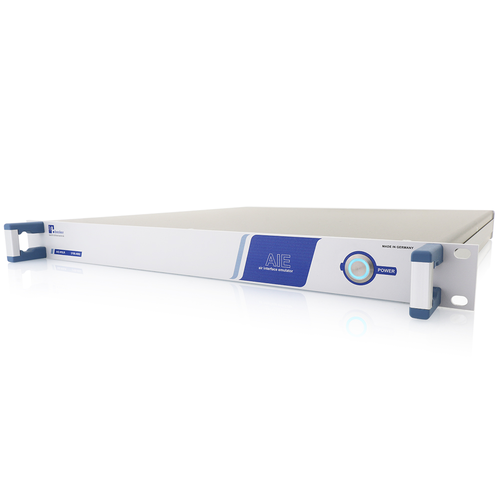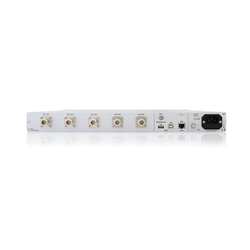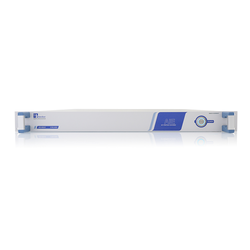AIE-W5LR
The air interface emulator AIE-W5LR enables the realistic emulation of HF levels for radio field communication such as in wireless networks. The device offers 5 bidirectional inputs and outputs for connecting different network access points. Each of the 5 ports can be fed separately with a composite RF signal. A freely programmable mixture of the other 4 signals can then be set individually for each port. The levels can be varied over a wide dynamic range using internal precision attenuators. The AIE-W5LR makes it possible to emulate a realistic air interface in which connected access points simultaneously receive field signals of different strengths from other access points in the network. The reproducibility of different realistic scenarios in a laboratory environment saves time and money in product development and verification.
step size 0.25 dB 500 ... 9000 MHz attenuation range 0 up to 127.0 dB
Matrix Function
The AIE-W5LR can also be used as a non-blocking matrix switch. Each input and output can be connected to the other ports in any way. Attenuators between the signal paths also allow the emulation of fading effects. Due to the fast response time of the attenuators, the device is ideal for efficient and fast solutions in automatic test systems.
Wideband
The operating frequency range is 500MHz to 9000MHz. Therefore, the AIE-W5LR is usable for all Wi-Fi standards including 802.11p for V2X and V2V communication.
High Dynamic
The adjustment range of the digitally controlled attenuator is 127.0 dB and can be freely adjusted in 0.25 dB steps. This enables use in test applications with the highest demands on dynamics and accuracy. The high attenuation range allows RF signal levels to be reduced below the sensitivity limit of connected devices. All RF connections of the device allow power levels of up to 2 watts.
Synchronous Operation
The AIE-W5LR can be conveniently and efficiently remotely controlled via LAN and USB interfaces and an additional TRIGGER-IO port. With each execution of switching commands, the trigger interface delivers a precise voltage pulse that can be used for the synchronous execution of switching commands from other devices in the compound. In addition, external pulses can be applied to this port in order to synchronously trigger the execution of pending switching commands. The emulator's attenuator configuration can be preloaded with SCPI-oriented ASCII strings in a queue over the LAN interface. After a positive TTL pulse edge at the trigger input, the preloaded damper configuration is then executed by the hardware without delay.
Latest modification: 11.01.2018




